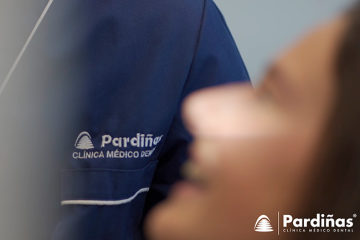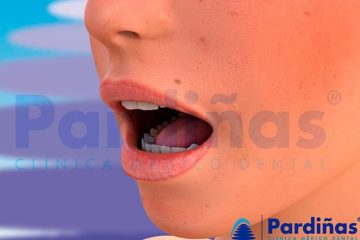Since we were kids, we were taught the importance of having a proper dental hygiene with the positive consequences that this has on health. However, the placement of a fixed implant, bridge or prosthesis may require a change in our oral hygiene habits. But how an implant or prosthesis is cleaned?
How to clean an implant or dental prosthesis - Step by step
 The anatomy of the parts replaced by dental implants is not exactly the same as natural teeth. There are usually more spaces with dental implants, so it is advisable to have a better hygiene and use special instruments for cleaning it.
The anatomy of the parts replaced by dental implants is not exactly the same as natural teeth. There are usually more spaces with dental implants, so it is advisable to have a better hygiene and use special instruments for cleaning it.
Any process of cleaning implants or prostheses begins with a regular tooth brushing. In some cases, it may be necessary to use special brushes, but under normal conditions it is possible to proceed in the usual way. You already know that to properly wash your teeth you have to do it after every meal, trying to dedicate about two minutes to this activity, covering all the corners of the denture and tongue and doing it with circular movements. You can read more in our article about tooth brushing.
After conventional brushing, the use of a special dental floss is recommended. This has a rigid end that is inserted under the prostheses, and a chamois in its central part, which is the one that will mechanically act to eliminate the traces of food and plaque trapped under the prosthesis.
In the case of patients with periodontal problems, the use of the waterjet is also recommended, which is a perfect complement for the hygienization of both teeth and implants. The waterjet uses pressurized water that helps to mechanically remove food debris and plaque accumulated in between the teeth.
Another method that facilitates the cleaning of implants and dental prostheses is the use of interdental brushes. These are small brushes designed to be inserted between the gaps between the gum and the prosthesis, reaching areas where the conventional brush is not capable due to its size.
The consequences of the lack of hygiene in prostheses and implants
In many cases, the loss of teeth is associated with periodontal disease, a problem caused by the accumulation of plaque and tartar on the teeth, especially in predisposed people. The implants used to replace lost teeth emerge from the gum, where also plaque and tartar may accumulate. For this reason, it is necessary to periodically control and clean these harmful accumulations for the gums and, therefore, for the dental implants that are inside the bone.
For all these reasons, dental hygiene is even more important in those patients with implants and prostheses, to whom we also recommend having a closer monitoring by your dentist.


